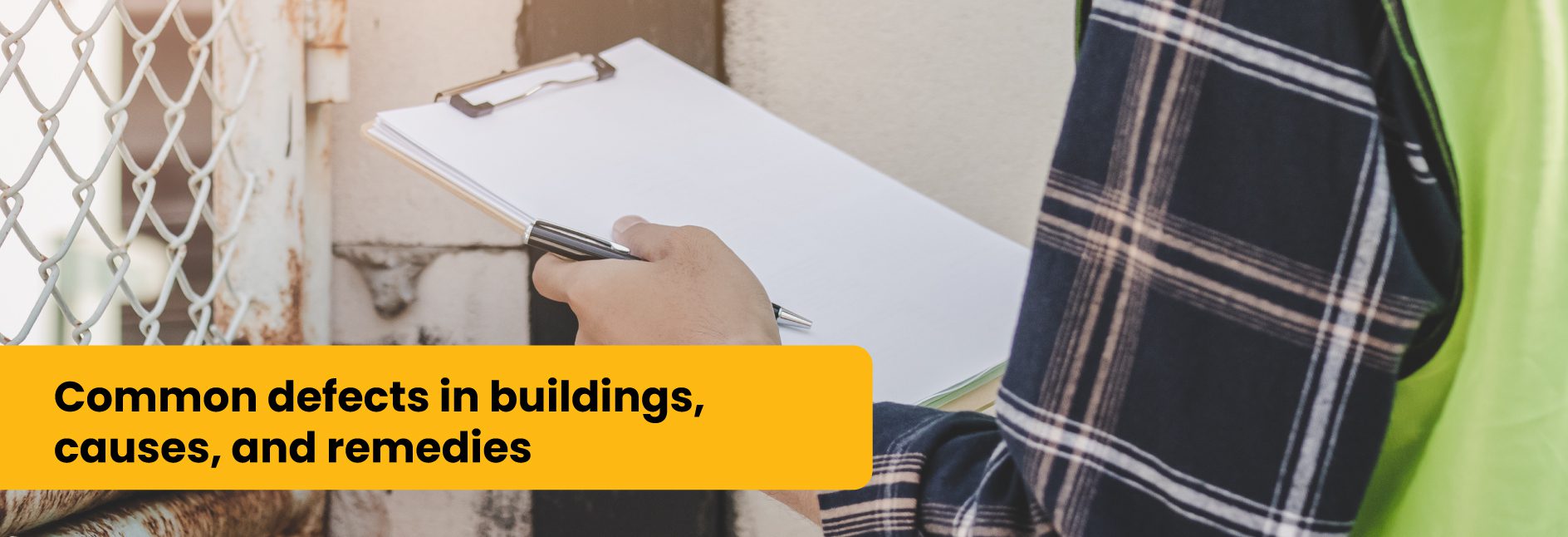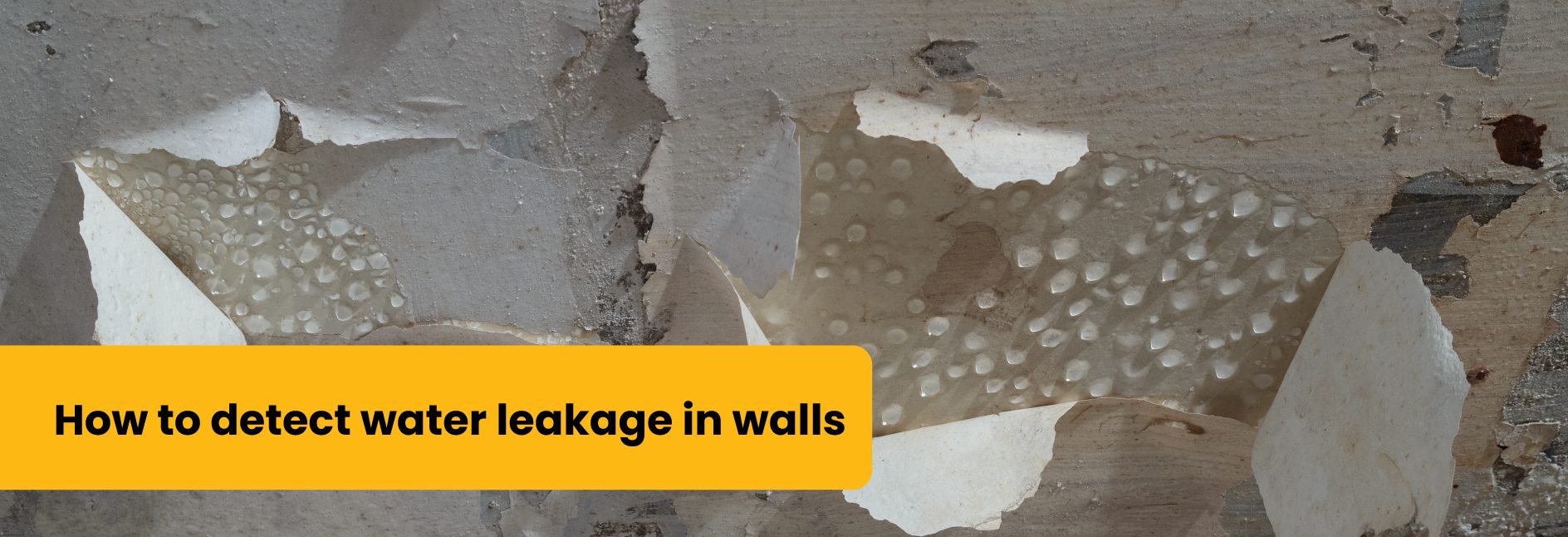Abstract
Defects in plastering come in many different varieties. Because of the poor quality of the plastering job, these flaws appear on the plastered surfaces. These types of cracks in plastering ruin the entire building’s aesthetics. To prevent structural flaws like rusting on the reinforcing bar, defects in plastering should be promptly addressed. In this article, our experts have elaborated their views on the most common defects in plastering and how to identify the type of defect in plastering. So, keep reading!!
Introduction
Most of us have homes on our minds. We use a variety of decorations in our homes. One method is to paint our house in the colour of our choosing and inventiveness. The plastered surface is typically painted using a few set procedures. Poor plaster quality can lead to a lot of issues down the road.
Around the world, plaster is frequently used in construction. Your plaster may occasionally begin to exhibit indications of deterioration or other issues, though. Knowing the potential types of difficulties and their root causes, you can address them before they escalate into larger ones. Today, we’ll go over the most common defects in plastering. We will help you understand how to identify the type of defect in plastering and how to prevent them.
Types of Defects in Plastering
1. Blistering in Plastering
As a result of the late slaking (adding water to lime) of lime particles in the plaster, blistering in plastering creates tiny areas of plaster that extend beyond the plastered surface. This flaw is typically brought on by uneven plaster mixing.
How to prevent it: Blistering in plastering may be avoided by ensuring that the plaster components are adequately mixed with cement.
2. Plaster Debonding
Plaster debonding is the separation of the plaster from the wall. It could be brought on by an overly thick plaster coating, poor substrate preparation, or a dusty, greasy, or dry substrate.
How to prevent it: The following issues must be addressed during plastering to prevent the plaster from debonding.
- Before plastering, clean the substrate of dust and grease.
- Give the substrate time to attain the proper moisture level.
- You should apply bonding chemicals if necessary.
3. Cracks on Plastered Surface
You probably noticed the crack in plaster as one of the most typical plastering issues. The plastered surface may develop cracks in a variety of ways:
- Crazing – It resembles a web of tiny spider cracks. Typically, they are quite little and do not penetrate the entire depth of the plaster. It happens when there is an excess of particles in the sand or when the plaster is placed on a dry basis; when the base absorbs water and fines build up on the surface, crazing results.
- Separation crack at joints – It typically happens where two distinct materials meet, for instance, where brickwork and RCC meet. Differential thermal movement is what causes it to happen.
- Crack with Hollowness – The plaster’s hollowness is the cause of this crack. Additional water in the plaster mixture or subpar construction might be other causes.
How to prevent it: The leading causes of cracks are poor construction or shrinkage and expansion of the plaster during drying. Here are some suggestions for avoiding cracks:
- To guarantee the appropriate workability in handling and application, ensure the addition of water to the mortar is carried out by a competent mason and not by untrained labour.
- It may be prevented by properly curing the plaster to prevent any accelerated drying.
4. Efflorescence in Plastering
The soluble salts are raised to the surface and take the shape of a white crystalline material when a freshly built wall dries out. The term for this is efflorescence in plastering. When soluble salts are present in the ingredients used to make plaster and building materials like bricks, sand, cement, etc., efflorescence develops on plaster surfaces. Even the water used for building tasks could include soluble salts in it. It severely impairs paint’s ability to adhere to the surface of walls and leads to other issues.
How to prevent efflorescence in plastering:
- Salt should not be included in any of the wall construction components.
- Ensuring that there is no dampness on the surface.
5. Falling out of Plaster
Plaster flaking and plaster peeling off are the two possible manifestations of this problem.
Flaking of plastering: Flaking is the creation of a tiny, loose material on a plastered surface. It mostly results from a bond breakdown between subsequent plaster applications.
Peeling of plastering: A patch is created once some of the plaster from the surface falls off. Peeling of plastering is the phrase for this. It is also largely due to bond breakdown between consecutive coatings of plaster.
How to prevent it: These flaws may be avoided with the right material selection and surface treatment. Good craftsmanship can reduce uneven adherence.
6. Popping of Plastering
Popping is the term used to describe the conical-shaped holes that occur when plaster cracks. It is brought on by the presence of contaminant particles in the mortar mixture, such as burned lime or other organic components.
How to prevent it: Make sure there are no impurity particles in the mortar mix to avoid popping in plastering.
7. Loose Plaster
Loose plaster is a word used to describe plaster moved by external forces such as material application, tapping, etc. This is mostly caused by insufficient curing and incorrect mixing.
How to prevent it: With the use of the right combination and enough curing, it may be avoided. A quality job will assist in preventing this issue.
8. Grinning
Grinning is appropriate if the mortar joints can be seen through the plaster. The change in suction between the masonry units and the mortar, as well as the removal of mortar joints, produce this.
How to prevent it: An undercoat or a spatter dash coat can prevent smiling before plastering.
9. Expansion
This involves plaster swelling, softening, layer cracking, and spalling. Proprietary gypsum-based products are typically to blame. The Portland cement paste interacts with the gypsum’s sulphate in the presence of moisture to create compounds with greater volume that damage the plaster.
How to prevent it: Plaster replacement is the sole solution for the expansion-induced disturbance caused by gypsum in the mix.
10. Popping
Conical shards called pop-outs emerge from the plaster’s surface. These are brought on by contaminant particles in the mixture that expands and create cavities in the plaster when they interact with the moisture in the mixture.
How to prevent it: After the pop-underlying out’s cause has been addressed, the hole can be patched using a specialised filler and painted over.
11. Lack of Hardness
Plaster’s hardness and strength are not specified, however, the four most typical reasons for soft plaster are as follows:
- Inadequate cement.
- Applying sand generates a lot of dust (more than 15 per cent by mass passing the 0,075mm sieve).
- The application of a mixture having a low water-retention capacity.
- Excessive water input after first mixing (a practice known as re-tempering).
How to prevent it: In many cases, a somewhat brittle plaster is preferable to one that is overly strong since it is less likely to exhibit substantial cracking or debonding.
Precautions To Be Taken While Plastering
- Make sure the plaster and masonry surfaces are properly bonded.
- Before plastering, all loose debris clinging to the brickwork should be removed.
- Raking the masonry mortar joints is recommended, as well as washing and maintaining moisture in the regions that need to be plastered.
- Wire brushes should be used to scrape or brush the joints clean.
- Before filling the spaces between the screeds, a plumb-bob level is used to check the uniformity of the level.
- The recommended ratio of cement to sand should be utilised when producing cement mortar.
- Using wooden floats, the mortar is premed hard before application.
Conclusion
Plastering offers the walls, ceiling, and other construction components a nice finish in addition to making the surfaces smooth. It is a crucial component in construction. Knowing about the defects in plastering is crucial for ensuring high-quality plaster. This information aimed to raise awareness about the types of cracks in plastering and how to avoid them. We hope that you will find this material useful. You may also contact our house inspection services at PropCheck to get your property inspected if you want professional advice.





